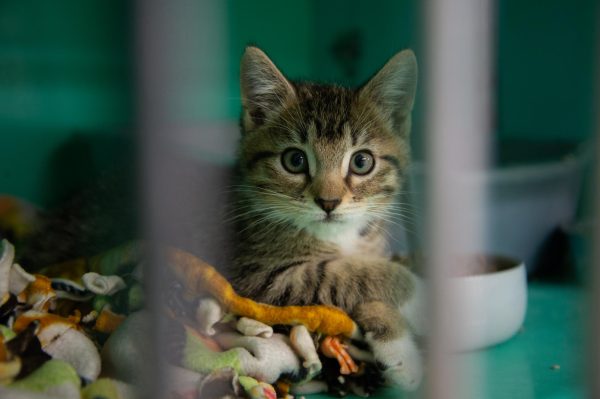Not cold, not emotionless — just asexual
March 3, 2017
As with many sexual orientations, asexuality is widely misunderstood among the public.
According to the University of North Carolina (UNC) – Chapel Hill LGBTQ Center’s website, asexuality is when someone does not experience sexual attraction toward individuals of any gender. However, this differs from those who choose to be celibate.
According to the site, celibacy is the choice to refrain from engaging in sexual behavior, but senior Gender Sexuality Alliance (GSA) historian McKenna Laskey said many asexual people still have sex. She said some choose never to have sex and others have sex with their partners or masturbate.
Junior GSA Programming Co-Chair Lucy Worth said celibacy differs in that people who are celibate choose to abstain from sexual activity, but asexuality is not a choice.
Worth said people often make assumptions about people who are asexual. One myth, she said, is asexual people have not found the right person yet and are emotionally “cold,” but she said many have romantic relationships without being interested in sex.
Laskey said romantic and sexual relationships can differ and do not necessarily have to interconnect.
She also explained the different kinds of feelings toward sex and forms of sexuality that are similar to asexuality. Worth said some are sex-repulsed, others are sex-positive and others are sex-neutral.
According to UNC-Chapel Hill LGBTQ Center’s site, there is also gray-sexual and demisexual. Gray-sexual people are those who are somewhere on the spectrum of sexuality between asexual and sexual. Demisexual people are those who do not experience primary sexual attraction but may experience secondary sexual attraction after a close, emotional connection has already formed.
Another myth, Worth said, is all asexual people are virgins or are not sexually attractive. However, she said though some remain celibate, many asexual people do not know they’re asexual until they have had sex.
“It’s not that asexual people can’t get laid,” she said. “It’s that they have no interest in getting laid.”
Asexual people are sometimes perceived as having a history of mental illness and/or sexual abuse, Worth said. However, sexual orientation is not determined solely by a person’s history, and mental illness and sexual abuse can happen to anyone of any sexual orientation.
Though asexual people do not have sexual attraction toward others, according to research by Lori Brotto of the University of British Columbia, there is no physiological differences between asexual people and others, meaning asexual people are physically capable of erections and vaginal lubrication.
Though research on asexuality has been minimal, leaders in sexuality research like Alfred Kinsley having studied the subject.
The Kinsley scale defines a person’s sexuality as ranging between zero and seven, with zero being completely heterosexual and seven completely bisexual. Asexual people are in the category “X,” meaning no sexual attraction.
According to Kinsley’s study, 1.5 percent of his adult male subjects fell into this category. In a follow-up in 1953, testing both men and women, he estimated 1 to 4 percent of his male subjects and 1 to 19 percent of his female subjects were asexual.
Asexuality in humans was not studied again until 2004 when Anthony Bogaert, a psychology professor at Brock University, published “Asexuality: Prevalence and Associated Factors in a National Probability Sample,” where he looked at different factors that made a person more likely to be asexual.
In his study, he found asexual people were less sexually active, had fewer sexual partners, started having sex later and were less likely to be in a cohabiting or married relationship. He also found asexual people were older than others and were more likely female, poor, non-white, poorly educated and start menstruating later.
He also found that they, on average, attended religious services more than others. However, Laskey notes these traits do not make a person asexual.
“A lot of people assume that asexual people are asexual because they are simply prudish or religious in the way of wanting to wait till marriage,” she said. “An [asexual] person certainly could be either of those things but they are not [asexual] because of these things.”
One more myth is that asexual people do not experience discrimination. She said asexual people are at risk for violence and sexual assault, especially “corrective rape,” which is meant to “fix” the victims’ sexual orientation. There is also concern for a lack of knowledge of asexuality.
“Due to lack of representation and the spread of misinformation,” she said, “asexual people may face prejudice from both outside of and within the LGBTQIAP+ community.”




















